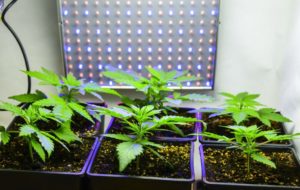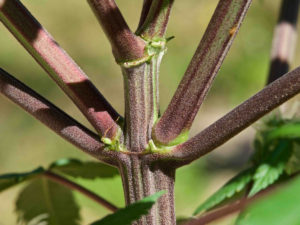 Cannabis plants need a minimum of 16 hours of light to stay in the vegetative state, but can provide a maximum lighting time of 24 hours a day can also be used to speed their growth. As cannabis matures, its root systems take on specialized roles.
Cannabis plants need a minimum of 16 hours of light to stay in the vegetative state, but can provide a maximum lighting time of 24 hours a day can also be used to speed their growth. As cannabis matures, its root systems take on specialized roles.
The center, older, and more mature roots contain a water transport system that may also store food for the plant if needed. The tips of the roots extend and push deeper and further into the soil in search of nutrients and water to supply its growth.
These single-celled root hairs are the essential key for cannabis plants to be able to uptake water and nutrients for growth. These roots are extremely delicate and must be handled as quickly, gently, and carefully as possible if doing any kind of transplanting.
These roots are prone to dry up and die very easily if they lack water so they may also be damaged by open air and sunlight if exposed for too long. Similar to its root system, the cannabis stem grows and stretches higher to catch more sunlight.
Stems and Nodes of the Cannabis Plant
The plants will produce nodes and buds along its stem, depending if it is plant’s genetics are Sativa or Indica, the nodes will be at varying distances between each node. Lateral and side branches branch out to develop buds and plant leaves to capture light.
 The central stem’s primary function is transmitting water and nutrients from its delicate root hairs up and throughout the entire plant. The foods for the cannabis plant are produced in the leaves, where sugars and starches are manufactured.
The central stem’s primary function is transmitting water and nutrients from its delicate root hairs up and throughout the entire plant. The foods for the cannabis plant are produced in the leaves, where sugars and starches are manufactured.
The stem produces strong cellulose, which supports the plant’s weight and growth. Cannabis that is growing outdoors where it is exposed to wind, rain, and other elements will cause the plant to produce more cellulose to support the plant and keep it from being uprooted.
On the opposite side, cannabis that is being grown indoors produces less cellulose due to environmental factors and will need staking to support its growth so the plants do not fall over.
Photosynthesis During Cannabis Horticulture
As the leaves on cannabis grow, the plant starts manufacturing carbohydrates for food and the chlorophyll within cannabis plants gives them their green color. Chlorophyll converts carbon dioxide (CO2) from the air, with water and light, into oxygen and carbohydrates.
This process is defined as photosynthesis. Water is drawn from the roots, through the stem, and into the leaves, where it interacts with carbon dioxide which makes the chemical process occur.
 On the underside of the leaves are very tiny microscopic pores called stomata and they take in CO2, which interacts with the water, which is delivered from the roots within the plant.
On the underside of the leaves are very tiny microscopic pores called stomata and they take in CO2, which interacts with the water, which is delivered from the roots within the plant.
For photosynthesis to occur, the plant and its leaves of the plant must remain moist and hydrated. Stomata are the regulators of moisture within cannabis plants, preventing dehydration and also allowing the leaves to exhale water vapor and oxygen as a (byproduct of photosynthesis).
It is of the utmost importance that these stomata pores stay as clean as possible for the plant to continue its growth and breathing. Be sure to wash off the leaves if you are spraying the leaves for pests and molds because if the stomata become clogged they will slowly suffocate.
Let us know what you think.




Responses